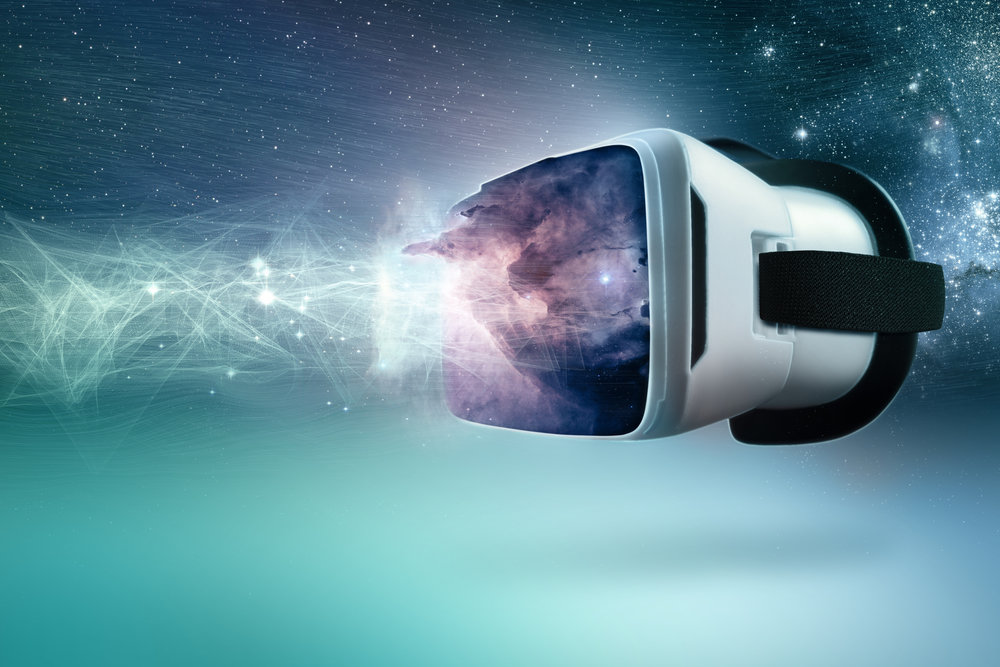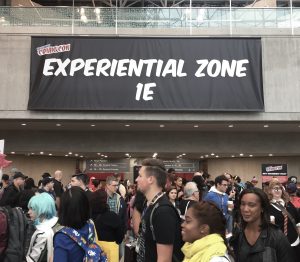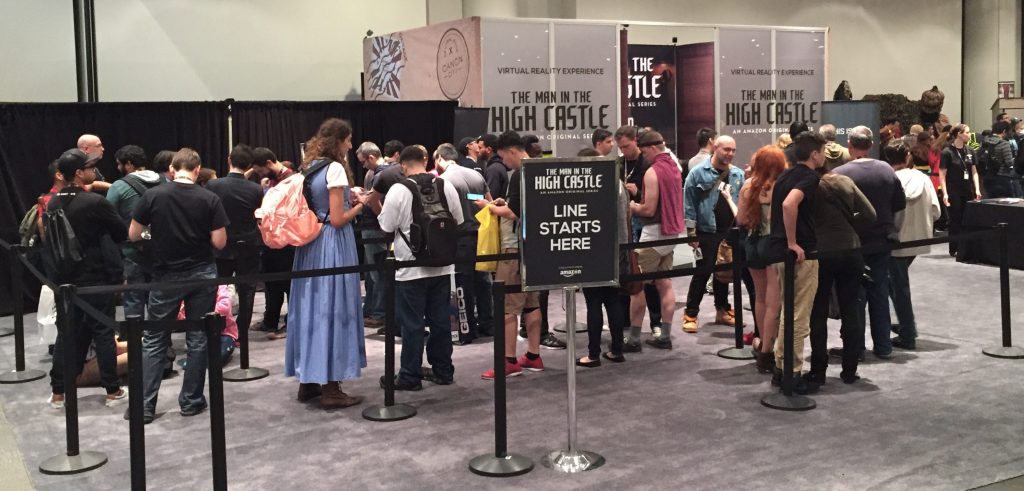
Virtual Reality at NYCC
One of the major changes NYCC made this year was moving many of its larger panels and events to off-site venues like the Hammerstein Ballroom. The move was done, in part, to free up the main venue itself and allow for more booth space as this convention continues to grow wildly. One such alteration removed the long-standing Empire Stage, where big panels were once held, to make room for something called the Experiential Zone, where virtual reality was the star of the show. If there are any lessons to take away from this year’s NYCC, it’s that VR is here to stay and, in the near future, it will serve as a very effective delivery tool for advertising.

It’s easiest to break the presence of VR at NYCC down into three main categories, and we’ll begin with the first one: traditional gaming. Capcom’s creepy Resident Evil 7 demo was a massive draw with standby lines capping at several hours long, but it was the only VR offering from any major game publisher. The games are out there, of course, but very few made an appearance at the show, and there’s multiple reasons why. First, the overall presence of gaming at NYCC has declined in recent years as the show emphasizes its main focus – comics and the media they inspire. Additionally, virtual reality booths take up more space than a standard gaming station does – not inordinately so, but at a show where every square inch of space is needed, more compact is always better. Regardless, video games have driven the popularity of VR more than anything else in recent years, and that segment of gaming will continue to grow whether or not the platforms appear at conventions.

Moving on, there was a second broad VR category we noticed: games built as an advertising tool for something other than a game. In this case, Starbreeze Studios provided the perfect example with a lengthy demo of their impressive John Wick Chronicles, a standalone Vive title that happens to integrate perfectly with the upcoming John Wick: Chapter 2. As we mentioned in our hands-on preview, the demo started with a trailer for the film, and though the game can absolutely justify itself on its own merit, it’s clear that the John Wick licensing is key to its existence. We see this in traditional gaming all the time, with movie and TV spin-off games releasing by the hundreds every year, and it only makes sense for VR to eventually start to garner the same attention.
Finally, there were VR attractions that were less of a game and more of an “experience” with varying degrees of interaction. For evidence of this, look no further than Amazon and their booth promoting The Man in the High Castle. It used VR to hype the show’s upcoming second season, though the experience itself essentially amounted to a brief point-and-click adventure. Other companies utilized a similar approach; for example, AT&T housed Samsung Gear VR stations meant to sell people on the technology – and their network, of course. The lack of interactivity didn’t serve as a detriment, however; many of these experiences enjoyed lengthy waits for the duration of the show.

So what does this mean going forward? We have several predictions. First off, NYCC attendees should expect more of these experiences on the show floor in the future. For most consumers, virtual reality remains impractical or out-of-reach; the generally high cost of the systems and their relatively unproven nature will ensure that, like any gaming console shortly after launch, VR will need some time to mature before it really hits the mainstream – if it ever does, that is. This means VR will retain a certain novelty factor in the near future; people will naturally gravitate toward that which they cannot experience on a regular basis, and companies know that, so the wow-factor that VR brings will continue to drive interest.
It also means that companies and media beyond gaming will continue to expand into VR to target consumers in new and flashy ways. This is by no means uncommon, as marketers tend to flock eagerly to new and emerging technologies. For example, when smartphones first hit the mainstream, the iOS App Store was flooded with apps of varying quality, advertising everything from Audi sedans to Star Wars: The Force Unleashed. With every new technology platform comes a new opportunity to sell and advertise, and you can bet that companies will use it.
This isn’t a bad thing, though. An influx of advertising-driven content to a platform means that the platform is captivating people. It means that the platform is succeeding. A lot of distinct and important elements need to come together for a gaming platform to take off; its technology needs to be impressive, developers need to embrace it, and consumers need to be able to afford it. If developers can engage with marketers and create high-quality content that makes the public take notice, everybody wins; the platform grows, developers stay in business, advertisers get their message out, and gamers have something new to experience. It’s a very exciting time to be following virtual reality, and what we’re seeing today is just the beginning.
This post was originally written by the author for TSSZ News.

![[ID: 04JsXbJBkGo] Youtube Automatic](https://lastminutecontinue.com/wp-content/uploads/id-04jsxbjbkgo-youtube-automatic-60x60.jpg)



